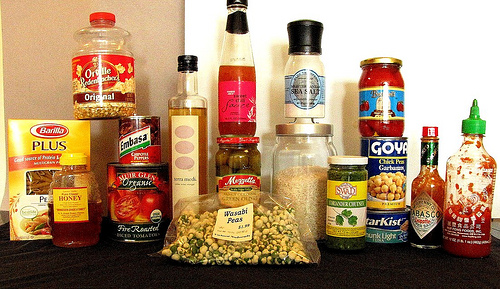Food storage is no laughing matter. If you store items at the wrong temperature or package them improperly, you’re going to end up with spoilage, staleness, and even worse problems that cause your food to become unsafe before it is slated for expiration. And unless you feel like buying the same food items over and over only to watch them go in the trash (or worse, send you to the hospital with food poisoning), it’s probably best to learn how to properly store them so that they are fresh, healthy, and appetizing when you return to eat them. Here are a few simple guidelines to keep your food nutritious and delicious.
 For starters, you’ll want to make sure that your fridge is set to the correct temperature. It should be somewhere is the range of 35 to 38 degrees Fahrenheit. Of course, if you set it slightly below this, you could keep foods fresher longer, but it could also make items like beverages begin to crystallize if you set it too low. Another option is to look for a fridge that comes with “crisper” drawers for fruits and vegetables. Some have their own temperature control, along with seals to keep out the moisture that can cause mold and mildew. As for the freezer, at or below zero degrees is preferred.
For starters, you’ll want to make sure that your fridge is set to the correct temperature. It should be somewhere is the range of 35 to 38 degrees Fahrenheit. Of course, if you set it slightly below this, you could keep foods fresher longer, but it could also make items like beverages begin to crystallize if you set it too low. Another option is to look for a fridge that comes with “crisper” drawers for fruits and vegetables. Some have their own temperature control, along with seals to keep out the moisture that can cause mold and mildew. As for the freezer, at or below zero degrees is preferred.
However, the temperature isn’t the only consideration. If you want to keep out potential problems like mold, bacteria, and insects, you’ll need to seal your food items properly. Tinfoil and plastic wrap aren’t going to cut it if you have persistent trouble with any of these pesky interlopers. Opt for tight-sealing Tupperware for any items that you would like to store after opening. Even these are not foolproof, but they should prevent most problems. As for the issue of freezer burn, you can utilize specialized Ziploc bags that are made to stop just such an occurrence.
But there are a whole host of foods that make a home in your pantry rather than your fridge or ice box. What should you do to protect them? Again, an environment that’s cool and dry is preferable to one that is susceptible to moisture. However, this may not be possible. For this reason, you should store dry goods (flour, sugar, and other baking items, pasta, cereal, and so on) in sealed containers. In an area that is both dry and free of contaminants (including insects) a bag clip would be appropriate for most items. And store cans in this area also. Although they are largely impervious to common threats like bacteria, extreme moisture and temperature fluctuations can impact the integrity of a can.
All of your food items can last until their expiration date (and even beyond) if you take the steps necessary to store them properly. You can, to some extent, control the temperature and moisture level of the environment, and by keeping opened foods in sealed containers or Ziploc bags, you have a better chance of returning to find them still fresh and ready for consumption. Shoddy storage is certainly your prerogative, but you’re the one whose health stands to suffer for this lapse in judgment.
Emma Martin writes for Spee-Dee where you can find auger filler and a rotary filling machine to meet your packaging needs and increase speed and efficiency in your business.
One reply on “Keeping Stored Food Fresh and Healthy”
try again, it should work now.